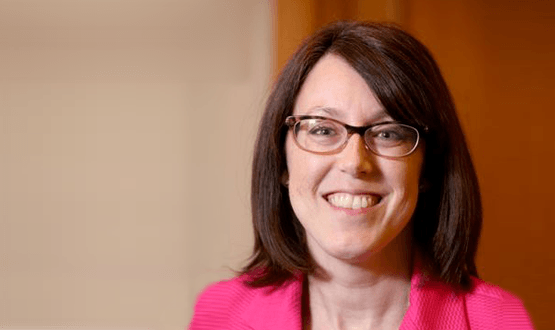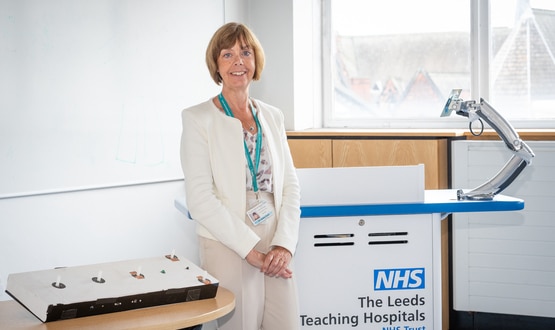Digital Health profile: Cindy Fedell
- 2 August 2016

Cindy Fedell, executive director, informatics and IT at Bradford Teaching Hospitals NHS Foundation Trust, didn’t always plan to have a career in IT.
Originally from Canada, her first degree, at Lakehead University, was in general arts, and it was only while she was doing a summer job at a clinic that she developed an interest in the electronic patient record systems that were then being developed.
She finished her degree part-time while working at a hospital where, she says: “I kept getting pulled into IT stuff.” As a result, she decided to take a second bachelor’s degree, this time in informatics, at Toronto’s Ryerson University.
The degree has stood her in good stead throughout her subsequent career in healthcare IT: “I think about how to approach things from an informatics perspective, not just an IT perspective – keeping the end user in mind, and how you include them.
“It was a good framework for how to do things: people, process, technology. My major was systems design and implementation, which is really a lot of what we do in informatics today still.”
Particularly valuable, she says, is the principle that systems always need to be tested by end users, not just IT staff.
Yorkshire and Canada: similar, but different
After graduating a second time, Fedell took a job as a systems analyst at a hospital, and then went into project management, eventually rising to become director of informatics/IT at Mount Sinai Hospital in Toronto.
Three years ago, in search of a new challenge, she moved to the Bradford role: “I knew the NHS had a good reputation, and I thought it would be good learning. Essentially, I thought ‘why not’?”
She’s settled in well, though the roundabouts took some getting used to (they don't have many roundabouts in Canada). But there is a lot of commonality between the NHS and the Canadian public health system, she says.
“There are very similar challenges around integrating with the business, and money of course is a challenge in any public system – the pace, the pressures, it's all pretty similar.”
There are some areas where Canada is ahead, and others where the NHS is further forward on its digital journey: she has been impressed with the work that Indi Singh, NHS England’s head of architecture, is doing on interoperability, and she describes the new summary care record as “fabulous.”
But she has found one key difference: “Informatics is firmly embedded in Canada. Nobody does anything without a consideration for informatics. And here it's not quite that embedded.”
In the NHS, she says, there’s still a mindset that technology is there to produce data for reporting rather than to help clinicians do their job better.
Fedell believes that it’s a “hiccup” of the National Programme for IT: “Everybody expected the national programme to deliver and didn't think about informatics, and now we're in a place where that didn’t deliver and we're all having to do informatics ourselves.”
Big IT projects: a VNA and an EPR
As an outsider, she believes she has brought a fresh perspective: “When I got here it was really interesting because people were doing workarounds for everything, and they had low expectations of IT.
“I came from a place where it was very much fully integrated in the business, and I came with a different expectation. I expect that if something doesn’t work that IT has to respond, and I expect that users are going to be consulted and it’s going to be a co-operative effort to do anything.”
Fedell’s approach at Bradford has been to take a strategic view of IT’s role in the enterprise. One of her biggest achievements so far is the implementation of a vendor neutral archive from BridgeHead Software that will store all imaging data, regardless of where it was created.
Last year, 126 million radiology images were transferred from Accenture’s central data store, where they had been held under a digital imaging NPfIT contract. Earlier this year, 1.7 million cardiology images were added, and images from other “ologies”, such as ophthalmology and pathology, are likely to follow.
Of the initial implementation she says: “It took a bit of work to hold to our vision of using a standards-based method of exchanging images”. She had to insist to suppliers that the archive had to be scalable. “I'm glad we held our ground, because that will serve us well in the long term.”
At the same time, Bradford is in the process of installing an electronic patient record system from Cerner, and the plan is to integrate the systems, so that a clinician looking at a patient record will be able to call up relevant images from the VNA.
Regional image sharing
The end of the NPfIT has led to trusts looking for more effective ways of sharing radiology images. Fedell is chair of the regional imaging consortium, a collaborative of nine Yorkshire trusts working to procure a new system that will enable each member to see images from the other eight.
It’s a typically ambitious project with three key aims: “One is that it’s better for patients, in terms of repeat testing, waiting and that sort of thing.
“Second, we should be able to save money and still do something that doesn't lose functionality for everybody. And then the third objective is to provide a foundation for a radiology network if that's what people choose to do.”
Fedell is characteristically open-minded about the form the solution will take – for her, it’s all about meeting the business requirements, not the technology.
The immediate challenge now is to complete the EPR implementation, but after that Fedell is looking forward to working out how to use data more effectively to help clinical decision-making.
“The next big wave is how you're going to use that clinical data now it’s available electronically – how you do quality improvement with that, how you look at outcomes,” she says.
Embedding IT in the business
But in three years, Fedell has already made a difference: “I think I've raised the profile of informatics. The position I hold didn't exist before.” (In Canada, she adds, there would be always be someone at the equivalent level in a trust.)
And her biggest achievement? “Being more tightly linked with the business, because if you’re that tightly linked you can support them better.”




